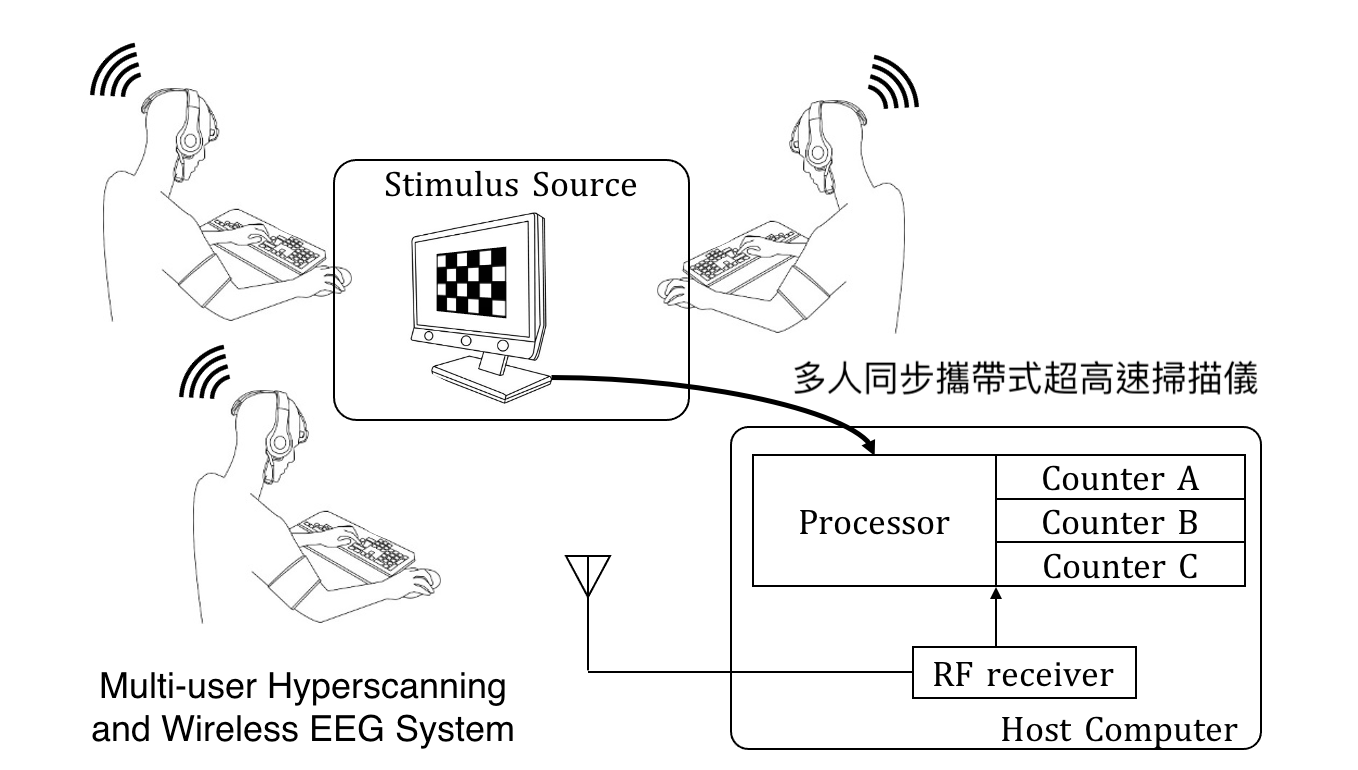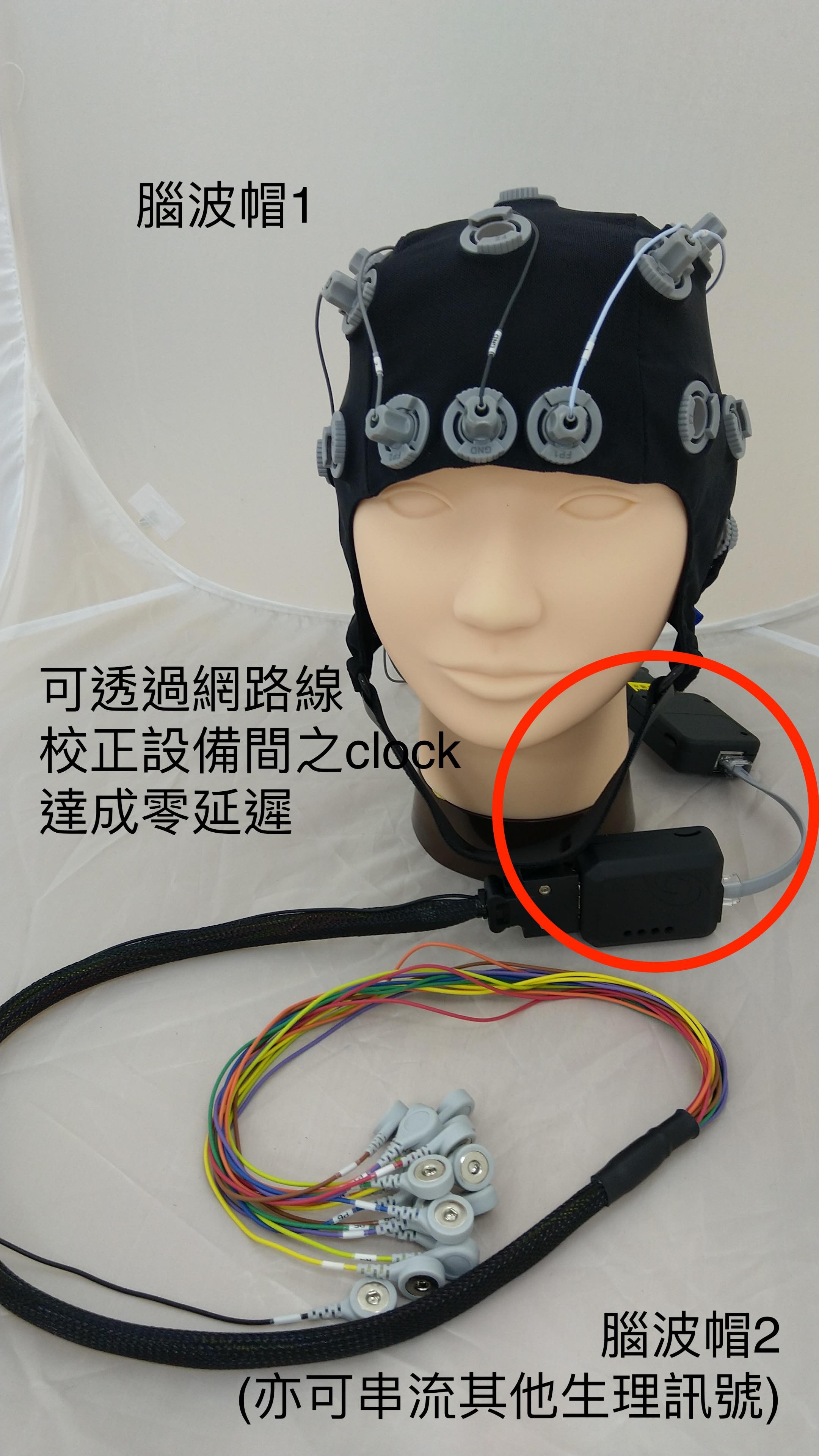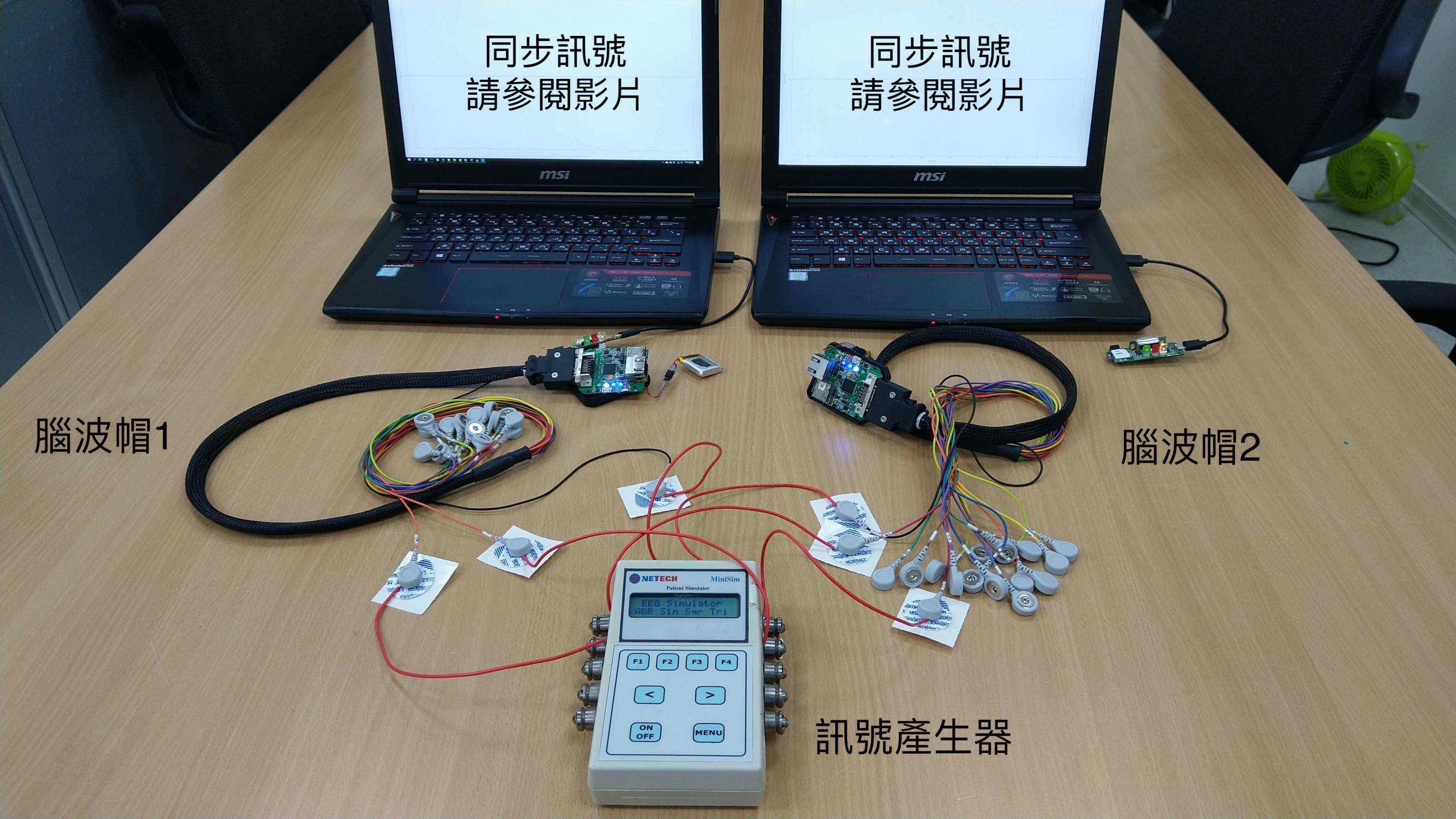| Technical Name | Multi-user Hyperscanning and Wireless EEG System | ||
|---|---|---|---|
| Project Operator | National Tsing Hua University | ||
| Project Host | 莊鈞翔 | ||
| Summary | Recently, the development of brain–computer interfaces (BCIs) has transitioned from personalized use to applications in group interaction. With the rise of industries and research studies related to neuroeducation and neuromarketing, synchronization and hyperscanning have become the heart of new-generation BCIs. With the funding from the Ministry of Science and Technology (MOST), the research team developed a Multi-User Hyperscanning and Wireless EEG System that uses self-designed amplifier circuits to record multichannel EEG signals. The designed wireless transmission interface enables complete synchronization of devices and computers and reduces synchronization error among multiple devices to be shorter than 1 ms. The system can further reduce the synchronization errors to the nanosecond scale according to user needs. This technology can be applied in various fields including neuroeducation, health care, and social activities. |
||
| Scientific Breakthrough | The Multi-User Hyperscanning and Wireless EEG System features low wireless signal latency and high-quality synchronization among multiple devices. The proposed system ensures zero packet loss during real-time data transmission. This time-stamping system can effectively integrate the clock rate differences of multiple devices and correct them at the receiving end, thereby reducing the time error between wireless devices to a minimum of 100 ns. The system can be used for precise physiological signal analyses. In addition to providing a solution to brain scientists and neural engineers, the system is applicable in multi-user venues. The system thus constitutes a quantum leap in research from individualized applications to neuroscientific applications in interpersonal interaction. |
||
| Industrial Applicability | The developed system can be used to detect EEG variations in individuals engaged in interpersonal and social activities, enabling us to identify the association between their cognitive neural functions during such activities. For example, quantitative physiological indicators obtained through synchronous measurement in interpersonal interaction can help researchers understand teacher-student interactions during classes and students’ social development. For enterprises, the system can be used for training, strategy, human resource management, and neuromarketing. We expect the system to have healthcare applications for better medical quality, specifically in psychiatric and psychological evaluation; the system provides quantitative data that traditional methods furnish with difficulty. |
||
| Keyword | Brain-Computer Interface Hyperscanning EEG Wearable Technology Multiuser Synchronization Neuroeducation Neuromarketing Healthcare Big Data Artificial Intelligence | ||
- ch.chuang@mx.nthu.edu.tw
other people also saw







